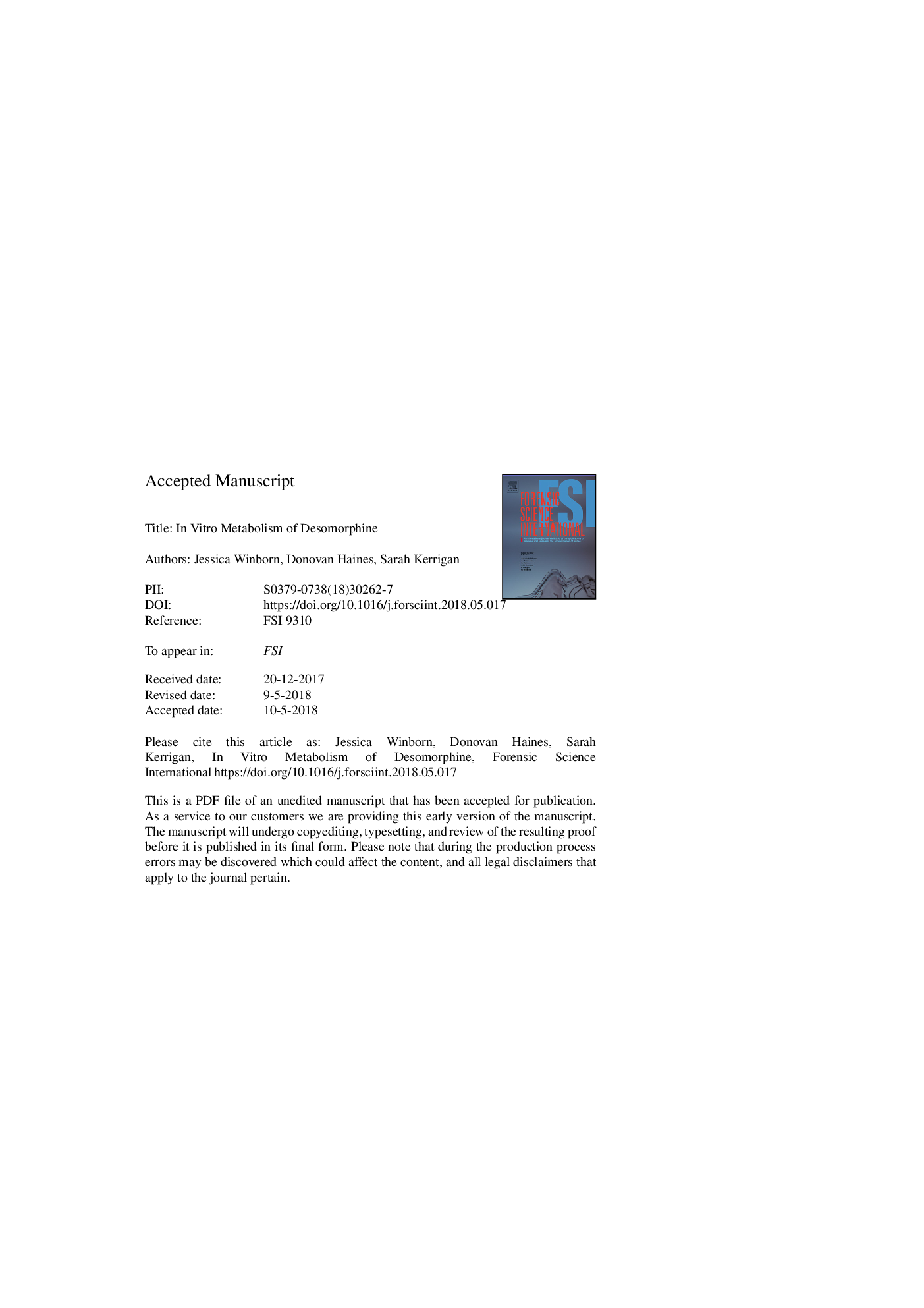| Article ID | Journal | Published Year | Pages | File Type |
|---|---|---|---|---|
| 6550805 | Forensic Science International | 2018 | 34 Pages |
Abstract
Desomorphine is reported to be the principal pharmacologically active opioid in Krokodil, a homemade injectable drug that is perceived to be a cheaper alternative to heroin. There have been limited studies regarding its pharmacology or detection in biological matrices. The goal of this study was to contribute further knowledge regarding its metabolism. Recombinant human cytochrome P450 enzymes (rCYPs) and recombinant uridine 5â²-diphospho-glucuronosyltransferases (rUGTs) were used to investigate the biotransformational pathways involved. Samples were analyzed by liquid chromatography/quadrupole-time of flight-mass spectrometry (LC-Q/TOF-MS). Seven rCYP (rCYP2B6, rCYP2C8, rCYP2C9, rCYP2C18, rCYP2C19, rCYP2D6 and rCYP3A4) enzymes were found to contribute to desomorphine metabolism and eight phase I metabolites were identified, including nordesomorphine, desomorphine-N-oxide, norhydroxydesomorphine, and five hydroxylated species. Inhibition assays were used to confirm individual rCYP isoenzyme activity. Nine rUGTs (rUGT1A1, rUGT1A3, rUGT1A8, rUGT1A9, rUGT1A10, rUGT2B4, rUGT2B7, rUGT2B15, and rUGT2B17) were found to contribute to the formation of desomorphine-glucuronide.
Related Topics
Physical Sciences and Engineering
Chemistry
Analytical Chemistry
Authors
Jessica Winborn, Donovan Haines, Sarah Kerrigan,
